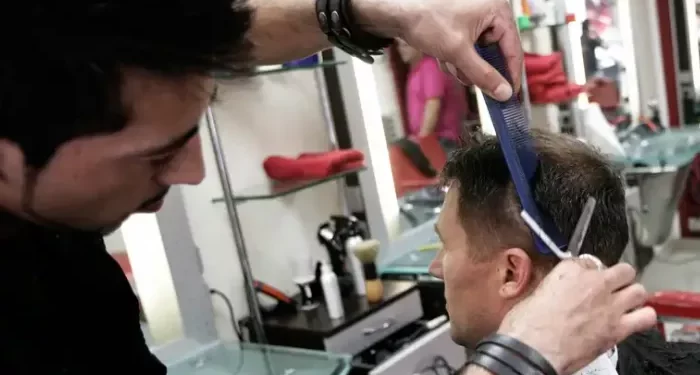A surge in ringworm infections tied to a popular men’s haircut has raised concerns among experts, with warnings that a quick visit to the barber could lead to an unwanted fungal infection.
Mike Taylor, who runs a barber training academy in Poole, Dorset, has noticed a disturbing increase in clients coming to him with ringworm, a fungal infection that can develop from poor hygiene practices during haircuts.
Despite its misleading name, ringworm is not caused by worms but by a fungus that thrives on the skin. The infection causes a red, itchy rash that can become scaly, swollen, and irritated. According to the NHS, it spreads through direct skin contact and can be transmitted by shared items such as combs, towels, and clippers, including those used for the popular “skin fade” haircut.
Taylor believes the rise in cases is linked to the growing demand for skin fades, a style that typically requires the use of foil clippers. These clippers can pick up hair, which if not thoroughly cleaned, can harbor fungal spores. However, Taylor suspects that in some lower-cost, unqualified barbershops, this cleaning process is often neglected.
He told the BBC, “I’d say 70 to 80 percent of clients come in asking for skin fades. To get that effect, you’ve got to use the foil clipper, but the problem is it needs to be thoroughly cleaned.” Taylor stressed that failing to clean the clippers properly poses a significant risk.
Further complicating the issue, Taylor notes the competitive nature of the barber industry, especially on high streets where many shops are offering lower prices. “The high street is depleting, and then suddenly there’s 12 barber shops on the same street, all trying to undercut each other. If prices drop, something has to give—often it’s time spent on cleaning equipment or ensuring proper hygiene standards.”
For some, the consequences are personal. Christian Reynolds, a 22-year-old from Bournemouth, suspects he contracted ringworm after getting a skin fade. “Almost immediately after I met up with my partner, she noticed a raised mark at the back of my neck,” he recalled. A pharmacist later confirmed that the rash was indeed ringworm, leaving Reynolds frustrated. “I felt annoyed because after doing research, I realized it was due to improper practice and not cleaning equipment properly,” he said.
Taylor and Reynolds are calling for stricter regulation in the barber industry. Despite being the statutory body for hairdressing, the Hair and Barber Council remains a voluntary register. Gareth Penn, the registrar for the council, agrees that stronger regulation is needed to combat these hygiene issues and prevent further outbreaks.
As more cases of ringworm emerge, both barbers and customers are being urged to prioritize cleanliness to avoid the spread of this uncomfortable and potentially harmful infection.
Related topics:

























